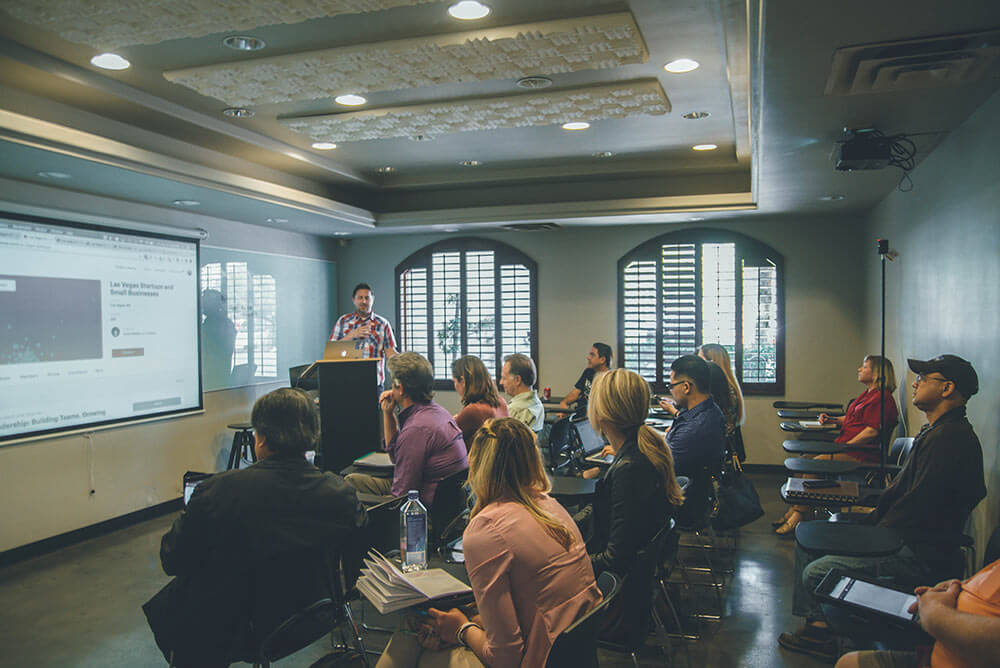Studying in Australia
Study with Australia. It's a fantastic way to further your education and boost your career prospects.

1. Australia has six of the world’s top 100 universities.
Australian education institutions may be relatively young compared with universities such as the UK’s Oxford or the US’s Harvard but they are up there with the best. The University of Melbourne, Australian National University, University of Sydney, University of Queensland, University of New South Wales and Monash University were all ranked in the top 100 universities in the Times Higher Education World University Rankings 2020.

2.Australia has one of the best higher education systems in the world.
Australia has an outstanding higher education system. With over 22,000 courses across 1,100 institutions, our system is ranked 8th in the Universitas 2019 U21 Ranking of National Higher Education Systems, higher than France, Germany, Norway and Japan.

3.Students' experiences and graduate outcomes are prioritized.
International students report almost 90% satisfaction scores for their living and study experience in Australia according to the 2018 Department of Education International Student Survey.
Recent sentiment surveys conducted by Study Australia have found that more than 80% of onshore students intend to finish their studies in Australia, indicating they are very satisfied with the quality of their education they have been receiving.

4.Australia has seven of the best student cities in the world.
According to QS Best Student Cities 2019, almost all of our major cities – Melbourne, Sydney, Brisbane, Canberra, Adelaide, Perth and the Gold Coast – are in the world’s top 100 student cities.
5.The Australian Government has invested more than A$300 million in scholarships for international students.
Australia offered over 3,000 Australia Awards scholarships and short courses to students from over 55 countries in 2019.

6.The Australian universities rank in the world’s top 50 in a huge range of study areas.
Australia provides world-leading education in many study areas. The Times Higher Education World University Rankings 2020 rated our institutions highly in the following fields:
- Arts & Humanities
- Clinical, Pre-Clinical & Health
- Engineering & Technology
- Life Sciences
- Physical Sciences
- Social Sciences
7.More than 2.5 million of Australian international alumni are making a global difference.
Over the past 50 years, 2.5 million international students have graduated from Australian educational institutions, according to the International Education Association of Australia. These graduates are now part of a global alumni network that is making an impact around the world.

8.The Australian universities have produced 16 Nobel laureates.
From the 1945 prize for the discovery of penicillin to the most recent prize in 2017 for the International Campaign to Abolish Nuclear Weapons, Australian graduates are high achievers.


Australian Education System
School education
(Primary and Secondary)
School education is similar across all of Australia with only minor variations between states and territories. School education (primary and secondary) is compulsory between the ages of six and sixteen (Year 1 to Year 9 or 10). School education is 13 years and divided into:
- Primary school – Runs for seven or eight years, starting at Kindergarten/Preparatory through to Year 6 or 7.
- Secondary school – Runs for three or four years, from Years 7 to 10 or 8 to 10.
- Senior secondary school – Runs for two years, Years 11 and 12.



Tertiary education
Tertiary education includes both higher education (including universities) and vocational education and training (VET).
Language of instruction
English is the official language of Australia and the main language of instruction in the education system. Many schools offer bilingual programs or programs in other languages.



Australian Qualifications Framework
The Australian education system is distinguished from many other countries by the Australian Qualifications Framework (AQF). The AQF was established in 1995 and is a national policy that covers qualifications from the tertiary education sector (higher education and vocational education and training) in addition to the school-leaving certificate; the Senior Secondary Certificate of Education.
The AQF has 10 levels and links school, vocational and university education qualifications into one national system. This allows you to move easily from one level of study to the next, and from one institution to another, as long as you satisfy student visa requirements. It allows for choice and flexibility in career planning. All qualifications in the AQF help prepare you for both further study and your working life.
If you are studying an AQF qualification, you can be sure that your institution is Government-authorised and nationally accredited, and that your degree or other AQF qualification will be genuine.
Australian institutions are linked across the country and across the world, which makes it easy to move throughout the education system between courses or institutions and formal agreement and recognition frameworks mean every step of the path will contribute to your future no matter what your study or career goals.


VCE
How is VCE structured?
The VCE course is made up of studies and units, some of which must be studied as a sequence.
A study is a subject, for example, English or Biology. It is made up of four units (Units 1, 2, 3 and 4), each of which is a semester in length.
For most students, VCE is completed over two years.
Students typically study Units 1 and 2 in their first year, and Units 3 and 4 in their second year.
You can study Unit 1 or Unit 2 of a subject as stand-alone units. However, you must enrol in Units 3 and 4 of a study as a sequence. This sequence needs to be completed in the same year if a study score is to be calculated.
Students usually study from 20 to 24 units (five or six studies) in Years 11 and 12.
You can take longer than two years to finish VCE if you need to. Some students start VCE in Year 10, and some study Units 3 and 4 in Year 11.
You should talk to your teachers or careers counsellor about how to structure your VCE program to best meet your needs.


What studies can I choose?
You have a variety of study options in VCE through which you can pursue your interests and build your skills.
There are over 90 VCE studies and over 20 VCE VET (Vocational Education and Training) programs for you to choose from across the humanities, sciences, mathematics, technology, arts and languages, as well as vocational studies.
Each school decides which VCE studies and VET programs it will offer. If your school doesn’t offer your chosen studies, they might be available from another provider.
You may want to consider Distance Education Centre Victoria or the Victorian School of Languages, or you can speak to your VCE coordinator about other options.


What do I have to do to achieve my VCE?
To achieve your VCE you must successfully complete 16 units including:
- three units from the English group, two of which must be a Unit 3 and 4 sequence.
- at least three additional Unit 3 and 4 sequences.
Your teacher can explain the differences between the English group studies, or you can find out more about them on the VCAA website.
You can complete the remaining units, including the three sequences at Unit 3 and 4 level, in any study that interests you. This could even be an additional English group study on top of the units you take to meet the minimum English requirement.
Your teacher determines if you have satisfactorily completed a unit based on the work you produce and submit and your adherence to VCAA and school rules.
What is a study score?
If you obtain at least two graded assessments and achieve an S for both Units 3 and 4 in a study in the same year, you will receive a study score. A study score is a number between 0 and 50 that indicates your ranking in terms of all students doing that study in that year.


How do I achieve marks in the VCE?
Units 1 and 2 are marked by your school; your teachers will set a range of assessments to see how you are progressing. The assessments have deadlines and you will need to plan and submit your work on time. Deadlines can only be extended in special circumstances.
For Units 1 and 2 you will receive either S (Satisfactory), or N (Non-Satisfactory). Your school may give you a grade for each unit, but only the S counts towards your VCE.
For Units 3 and 4 you will have grades calculated from A+ to E, UG (Ungraded), or NA (Not Assessed) for your assessment tasks, as well as an S or N.
There are three graded assessments for each VCE study at Unit 3 and 4 level. All VCE VET programs with scored assessment have two graded assessments.
Depending on the study, these may be School-based Assessments and/or external assessments.
School-based assessments are set by your teacher and include School-assessed Coursework (SAC) that is completed at school, and School-assessed Tasks (SAT) that are completed at school and home. These are marked at your school. The VCAA checks the marks to make sure that all schools in Victoria are marking to the same standard. You can read about the rules for marking/assessment on the VCAA website, or you can ask your teachers.
External assessments are set and marked by the VCAA. They are the same for all students taking the same VCE study. Usually this will be an exam – whether written, oral, performance or in an electronic format.
Your external assessments are marked by assessors who are experts in their area of study. All VCE studies are marked to the same standard and there are multiple checks to make sure that marking is fair.
Exams are held each year in October and November. You will receive plenty of notice about the exact dates of your exams from your school.



What is an ATAR?
Tertiary institutions look at the ATAR and the combinations of VCE studies students have completed before offering places.
The ATAR is calculated by the Victorian Tertiary Admissions Centre (VTAC) on the basis of study scores and is presented as a ranking between 0.00 and 99.95.
If you want to obtain an ATAR, you need to have at least four study scores, one of which must be from the English group.
You can find out more information about the ATAR, subject combinations and course choices through VTAC.
What is the GAT and why is it important?
All students studying at least one Unit 3 and 4 VCE study (or scored VCE VET study) must sit the General Achievement Test (GAT). The GAT measures your general knowledge and skills in written communication, mathematics, science, technology, humanities, the arts and social sciences.
Although the results do not count directly towards your VCE results, they play an important role in checking that school-based and external assessments have been fairly and accurately assessed.
The GAT may also be used to determine Derived Examination Scores for students who are ill or affected by other personal circumstances at the time of a VCE external assessment and whose result is unlikely to be a fair or accurate indication of their learning or achievement.


